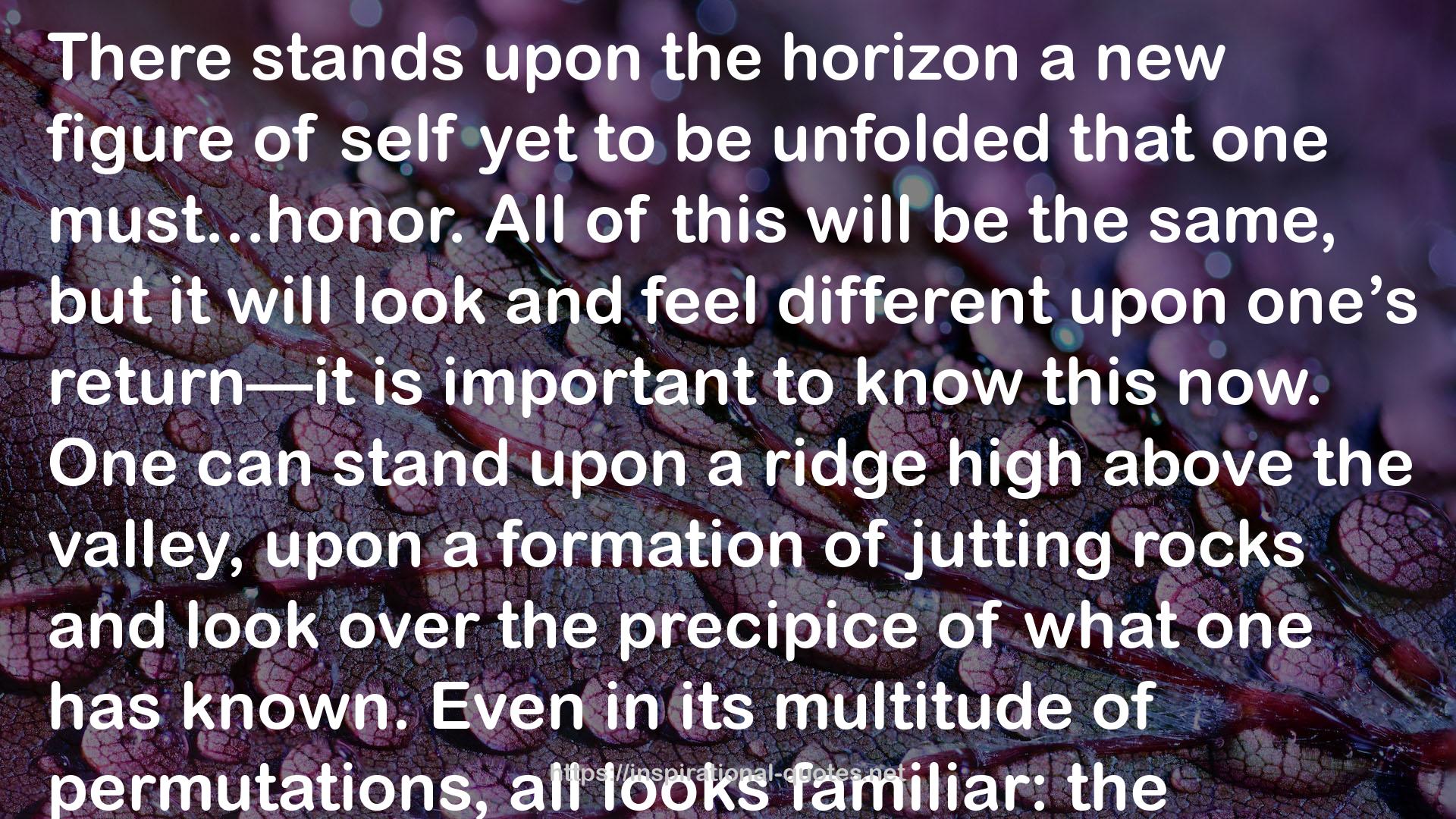" There stands upon the horizon a new figure of self yet to be unfolded that one must...honor. All of this will be the same, but it will look and feel different upon one’s return—it is important to know this now. One can stand upon a ridge high above the valley, upon a formation of jutting rocks and look over the precipice of what one has known. Even in its multitude of permutations, all looks familiar: the mountains, the fields, the skies—all of it connected to one’s eyes as though by invisible threads. The idea of breaking free from them is now rather troubling. Do those threads have the tensility to endure the stretch of a journey? Will these specters of recognition remain immutable and intact and hitched to the undulating satchel through one’s peregrinations to yet unseen territories, or do these delicate snares snap, relegating these identities only to the wake, sequestered in their purity even from one’s keenest reminiscence? Irrespective of the case, one should assume there to be a reconstitution of both identifier and identified over this inexorable trek—the unyielding essence of each layered, nevertheless, by the sediment of accumulating circumstance until there exists an uncertainty when they meet again. The landscape of then is a petrified visage—the organic layers of tree barks are supplanted by crystalized molds of mineral simulacrum, grass stalks of ages ago have dried and yellowed, autumn blossoms breathe new scents unaware of previous aromas whose places they now occupy, ambling figures have crumbled to bone whistles stacked in cylinders in muted sarcophagi with their predecessors. Faces meet landscapes—there is a vague recognition between the overlapping partners, an attempt at translation to identify elements once apprehended, but inevitably no solution is available in the moment that can bridge pristine artifacts with reconfigured forms. "
― Ashim Shanker , Inward and Toward (Migrations, #3)
